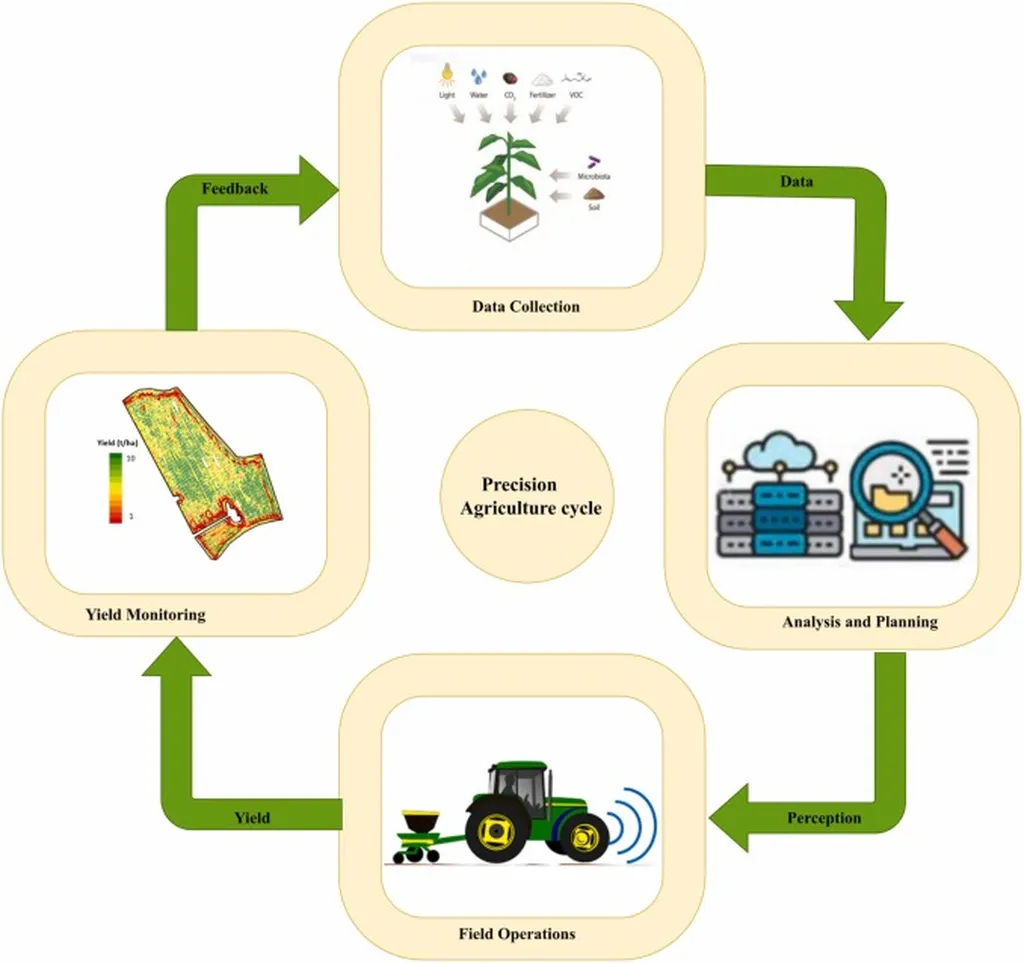In the ever-evolving landscape of precision agriculture, researchers are continually seeking innovative methods to harness the power of data for quality control and improvement. A recent study published in *Frontiers in Plant Science* (translated as “植物科学前沿”) offers a promising approach to constructing interpretable and robust multiclass identification models using preprocessed datasets. This research, led by Cong Wang from the Key Laboratory of Tobacco Chemistry at the Zhengzhou Tobacco Research Institute of China National Tobacco Corporation (CNTC), presents a novel methodology that could significantly impact the agricultural and energy sectors.
The study focuses on the use of image and near-infrared (NIR) spectroscopic data, which are widely employed in precision agriculture. However, the raw data from these sources often lack practical interpretability due to the ambiguity of individual pixels or spectral data points. Additionally, imbalanced datasets can lead to model overfitting, compromising the robustness of the analytical models.
To address these challenges, Cong Wang and his team proposed a groundbreaking approach. Instead of using raw data, they utilized preprocessed data—morphological features extracted from images and chemical component concentrations predicted from NIR spectra—to build multiclass identification models. “By preprocessing the data, we can transform it into a more interpretable format, which not only enhances the model’s robustness but also provides valuable insights for quality control,” explained Cong Wang.
The researchers employed combined kernel Support Vector Machine (SVM) models to identify the rice variety and cultivation region of tobacco. The determination of kernel parameters and the percentage of different types of kernel functions were accomplished using Particle Swarm Optimization (PSO), making the approach self-adaptive. Feature importance and contribution analyses were conducted using Shapley Additive Explanations (SHAP), a method that elucidates the specific contributions of key variables to the model predictions.
The resulting models demonstrated exceptional performance, achieving classification success rates of 97.9% and 97.4% via n-fold cross-validation on rice and tobacco datasets, respectively, and 97.7% on an independent test set. “The high accuracy and robustness of our models open up new possibilities for quality control and improvement in agricultural products,” noted Cong Wang.
The implications of this research extend beyond the agricultural sector. In the energy sector, where biomass is a critical resource, the ability to accurately identify and classify different varieties and regions of crops can enhance the efficiency of biomass conversion processes. This can lead to more sustainable and cost-effective energy production, aligning with the growing demand for renewable energy sources.
Moreover, the methodology proposed by Cong Wang and his team offers a scalable solution that can be adapted to various types of agricultural and energy-related data. As the world continues to grapple with the challenges of climate change and resource depletion, such innovative approaches are crucial for developing sustainable and resilient systems.
The study published in *Frontiers in Plant Science* not only expands the applicability of image and NIR spectroscopic data but also provides researchers with a powerful tool for investigating factors crucial to the quality control and improvement of agricultural products. As the agricultural and energy sectors continue to evolve, the insights gained from this research will undoubtedly shape future developments in the field.
In a world where data-driven decision-making is becoming increasingly important, the work of Cong Wang and his team serves as a testament to the power of innovative research. By transforming complex data into actionable insights, they are paving the way for a more sustainable and efficient future.

